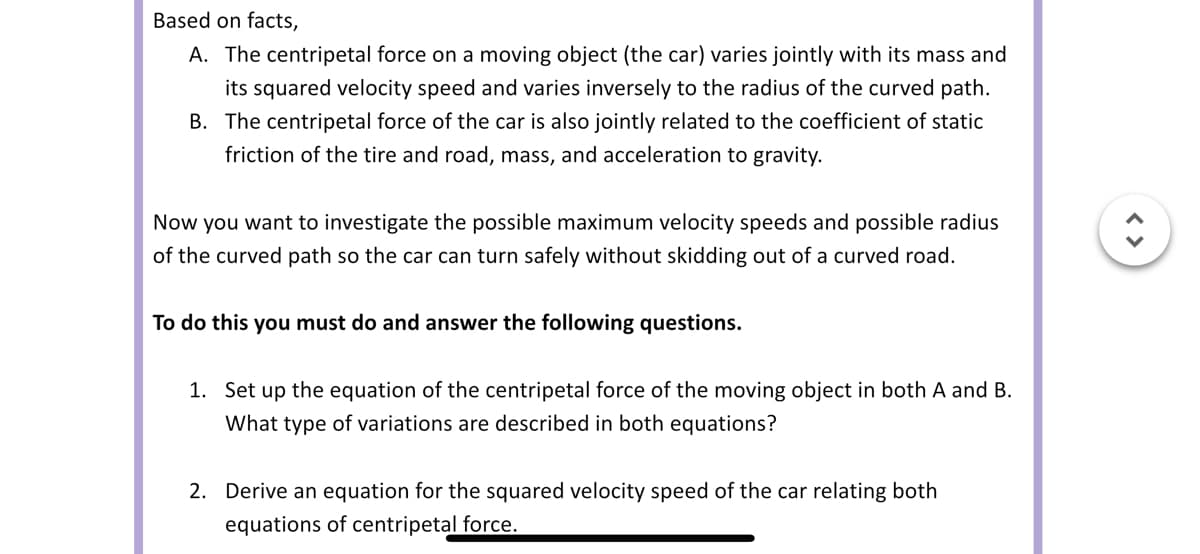Based on facts, A. The centripetal force on a moving object (the car) varies jointly with its mass and its squared velocity speed and varies inversely to the radius of the curved path. B. The centripetal force of the car is also jointly related to the coefficient of static friction of the tire and road, mass, and acceleration to gravity. Now you want to investigate the possible maximum velocity speeds and possible radius of the curved path so the car can turn safely without skidding out of a curved road. To do this you must do and answer the following questions. 1. Set up the equation of the centripetal force of the moving object in both A and B. What type of variations are described in both equations? 2. Derive an equation for the squared velocity speed of the car relating both equations of centripetal force.
Based on facts, A. The centripetal force on a moving object (the car) varies jointly with its mass and its squared velocity speed and varies inversely to the radius of the curved path. B. The centripetal force of the car is also jointly related to the coefficient of static friction of the tire and road, mass, and acceleration to gravity. Now you want to investigate the possible maximum velocity speeds and possible radius of the curved path so the car can turn safely without skidding out of a curved road. To do this you must do and answer the following questions. 1. Set up the equation of the centripetal force of the moving object in both A and B. What type of variations are described in both equations? 2. Derive an equation for the squared velocity speed of the car relating both equations of centripetal force.
Related questions
Question
answer number 2

Transcribed Image Text:Based on facts,
A. The centripetal force on a moving object (the car) varies jointly with its mass and
its squared velocity speed and varies inversely to the radius of the curved path.
B. The centripetal force of the car is also jointly related to the coefficient of static
friction of the tire and road, mass, and acceleration to gravity.
Now you want to investigate the possible maximum velocity speeds and possible radius
of the curved path so the car can turn safely without skidding out of a curved road.
To do this you must do and answer the following questions.
1. Set up the equation of the centripetal force of the moving object in both A and B.
What type of variations are described in both equations?
2. Derive an equation for the squared velocity speed of the car relating both
equations of centripetal force.
Expert Solution
This question has been solved!
Explore an expertly crafted, step-by-step solution for a thorough understanding of key concepts.
Step by step
Solved in 3 steps with 2 images
